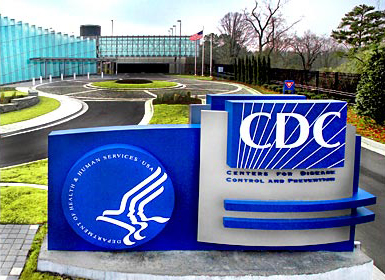PNN SURVEYS
From time to time, we conduct online surveys on various topics related to pain management, sometimes partnering with other organizations to reach a select audience of patients and healthcare providers.
Over 30,000 people have participated in PNN surveys, providing valuable insight on topics like opioid medication, alternative pain therapies, pain care in hospitals, and the effectiveness of efforts to reduce opioid abuse and addiction.
Over 2,500 patients, providers and caretakers participated in our 2022 survey on the revised draft of the CDC opioid guideline, which is designed to give doctors more flexibility in prescribing opioids and determining the dose.
Most respondents believe the changes are inadequate, will not undo the harm caused by the original guideline, and believe the guideline should be revoked, not revised.
To see the full survey findings, click here. You can also read some of the comments left by respondents here and here.
Nearly 4,200 patients, providers and caretakers participated in our 2021 survey on the five year anniversary of the CDC’s opioid prescribing guideline, which the agency is planning to update and possibly expand.
Nine out of ten patients said their pain levels and quality of life have worsened since the guideline’s release in 2016.
The vast majority of respondents — 75% — want the entire guideline revoked, not updated. Most also do not trust the CDC to revise the guideline in an impartial, unbiased and scientific manner. To see the full survey findings, click here.
This survey was conducted in 2019 to measure the impact of the CDC opioid guideline on patients, doctors and other healthcare providers. Over 6,000 people participated.
An overwhelming majority agreed the guideline had worsened the quality of pain care in the United States, and failed to reduce addiction and overdose rates.
To our knowledge, this is the largest and most comprehensive survey to focus on the intended and unintended consequences of the guideline. The CDC itself has not made a similar effort of any size. To see the survey results, click here.
When CVS Health announced plans in 2017 to limit the dose and supply of opioid pain medication for customers in its pharmacy benefit management program, there was an immediate online backlash calling for a boycott of CVS. We wanted to know how people felt about the policy.
Over 2,500 people responded to our survey, with over 93 percent saying they would support a boycott of CVS. There was broad support for a boycott from all groups, including patients, healthcare providers, caretakers, and friends or family of patients. To see the survey results, click here.
Our survey in 2017 on the one year anniversary of the CDC opioid guideline found that most patients and providers believe the guideline has been harmful to patients and worsened the quality of pain care in the U.S.
Over 70% of patients say they are now prescribed fewer opioids or none at all. Many have a hard time finding doctors willing to treat their pain, and some are hoarding opioids or turning to street drugs for pain relief. To see the survey results, click here.
Over 6,100 people participated in our 2016 survey on kratom, an herbal supplement increasingly used to treat pain, addiction, depression and anxiety.
Over 90% said kratom was "very effective" in treating their pain and 98% believe the herb is not harmful or dangerous. Respondents were overwhelmingly opposed to any federal effort to ban kratom or list it as a controlled substance. To see the survey results on kratom, click here.
Our 2016 survey on hospital pain care drew a very passionate response from patients, including many who believe they were treated poorly in hospitals or labeled as addicts or drug seekers.
Over 80% of patients believe hospital staff are not adequately trained in pain management and over half rated the quality of pain care in hospitals as poor or very poor. To see the results from our hospital survey, click here.
Our 2015 survey on the CDC's opioid guideline came out a few months before the agency's recommendations were finalized. Many had strong feelings about them even then.
Over 90% thought the guidelines would be harmful to patients. Many also predicted an increase in patient suicides and that use of heroin and other illegal drugs would increase. To see the results from our 2015 survey on the CDC guidelines, click here.
Have a Survey Idea?
Is your organization trying to reach pain patients or healthcare providers working in pain management?
Conducting an online survey is a great way to measure public attitudes on a variety of pain care issues, while at the same time building awareness of your organization in the pain community.
For more information, contact Pain News Network at editor@painnewsnetwork.org.












